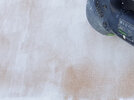Except for the edges, which can be a problem to seal. I'm sure @opps can advise better than me about this. If using MDF to take a profile it is better to use MR-MDF because any profiles machined in it are far less woolly. TBH red deal will give a crisper profile than MDF
Agreed, moisture resistant MDF will have far less "punky"/furry edges. The increased level of resins results in much harder edges.
Years ago, when I worked for a cabinet maker, we used to brush on a Morrells high build MDF sealer on routed/profiled edges, it was a two part sealer. The stuff was very, very hard. We (read: I) would spend hours sanding it flat using wire wool. It made the routered edges (almost) as tough as the rest of the MDF.
I don't think they make it any more but they do have a pre-catalyst version.
Morrells 329 High Build Pre-Catalyst MDF Sealer - Wood Finishes Direct
Morrells 329 High Build Pre-Catalyst MDF Sealer is a quick drying, 32% solids pre-catalyst sealer formulated for use on all substrates, especially MDF.
Unfortunately, it is only available in 5L and costs about £45.
These days, I tend to (heavilly) brush on about 3 coats of Leyland Trade acrylic primer and sand back the paint build up with 180g silicone carbide paper. I use Leyland because it is one of the few acrylic primers that doesn't clog my abrasives. Silicone carbide paper is far more flexible than aluminium oxide paper. I sand until I have pretty much removed most of the paint.
Although not the edge of the MDF, the following image shows how much of the primer I sand away.

(As per the above image, it is a myth that MDF is perfectly flat- it has score marks in it from the manufacturing process. I guess the sheets run through a massive drum sander. Waterbased primer will raise the "grain" which I don't see as a problem, given that I am going to sand it flatter than when the MDF was manufactured.)
The finish (sanded edge) is absolutely fine for hand painted finishes. If spraying with 2K paints I normally hit the profiled sections with two coats and then sand flat with 220 grit Abranet.
I have seen other people recommending Zinsser BIN for the edges, but it is pig to sand. Owatrol oil will also work, but dries very slowly (and is more expensive).
To be honest, the edges are less knock resistant than the likes of Morrell but if knock resistance is paramount, you shouldn't be using MDF.
BTW, the likes of ISF also make similar products


